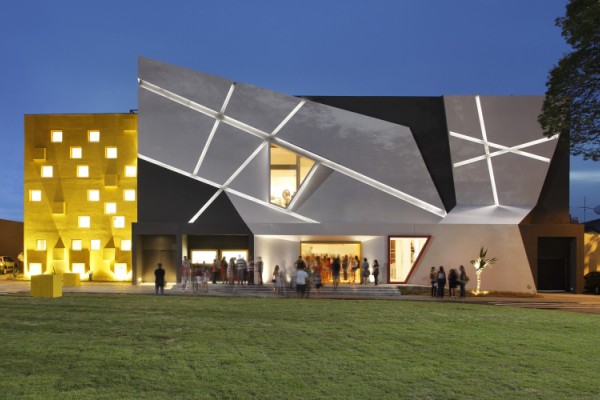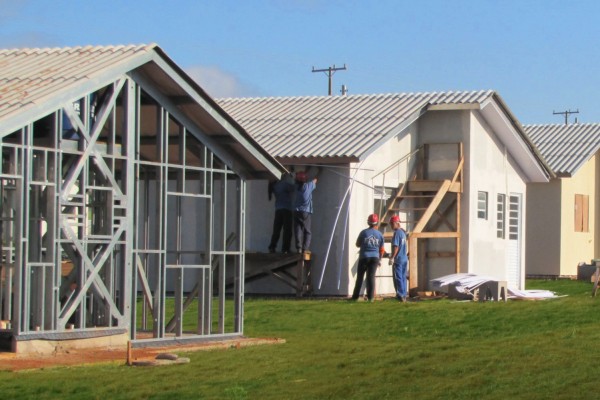Saint-Gobain Brazil: Building Distribution and Construction Products
Benoit d’Iribarne, President of Saint-Gobain Brazil
Benoit d’Iribarne gives an overview of Saint-Gobain Brazil, where the company acts in segments such as building distribution, construction products, innovative materials and packaging, totaling a revenue of more than US$ 3 billion.
Interview with Benoit d’Iribarne, President of Saint-Gobain Brazil
Can you gives us an overview of Saint-Gobain?
Saint-Gobain is a company of French origin that has been in existence for 349 years so it is a company with an interesting history. Saint-Gobain has been in Brazil for about 76 years so it already has a strong tradition in the country. We are currently making sales of just over US$ 3 billion in Brazil and we have about 17,000 employees. Saint-Gobain is a company that deals with different segments of industry, service and construction. It is well-known in the construction market and has some famous brands in Brazil – Brasilit, Quartzolit, Placo, Isover and PAM. It also has a distribution network which is called Telhanorte as well as industrial brands including Norton, Cebrace, PAM and Sekurit. It’s an interesting combination and is a good reflection of the economy of the country.
Today we try to combine the advantage of being a local company with local management – 99.9% of our people are local people who know the country, its rules and how to deal with the complexity of the country – with some technical and industrial support from outside the country.
I think we also have been able to enjoy an interesting growth over the last year. For example, we have been able to grow slightly above 10% last year in Brazil because most of our products and services contribute to the development of the Brazilian economy. For example, in Brazil there is a deficit of about 10 million houses so there is a very big need for housing. Every year, the country is trying to catch up and is building houses but the deficit is almost stable. Our materials are good for that because one of the reasons for the deficit is because unemployment is almost zero in Brazil. There is a lack of qualified people to do the job; using the material from Saint-Gobain you can do the job more quickly with fewer people so it allows you to build more houses in the same timeframe. For that, for example, we have some technical solutions with plaster board that have enjoyed growth of about 38% last year.
Basically we are delivering some solutions to help the country grow and to improve the productivity of the country. It’s also an important focus of Saint-Gobain that the innovations we put into the market are not innovations only for high-level people but it is innovation for every class of society, from the middle class to the people who are just starting to have access to the economy. I think for that reason, the solutions are enjoying good success in the country.
They must be very happy with those figures back in France.
When we go back to headquarters they are teasing us to do even better, but at the end of the day, the quality of our Brazilian team is well recognized.

What are the major challenges that Saint-Gobain has to face?
One of the important challenges is that in the industrial area, for example, we are suffering from some of the imports from China. We know that China is sometimes making some very aggressive competition, selling below production cost, and doing some dumping. I think some of the Chinese dumping is a question that we have here.
A second challenge is the cost of energy. Brazil today has a lot of potential for energy for the future but the way we are using the energy today and the transportation network is not as efficient as it should be. The cost of energy in Brazil is one of the major challenges for the industry. On the other hand, as we said, it’s a land of opportunity and one of the challenges is to take advantage of this opportunity, to bring solutions to the market, and to help contribute to the development of the country.
What about your competitors, aside from the Chinese companies?
We have many competitors here; there are local competitors, small competitors, big competitors and international competitors from the US and Europe. But I think that competition is good for the business. It’s part of the game, at least if it’s fair competition. Here in Brazil the local competitors are people who are entrepreneurs who are going to build their businesses and want to make money so it’s a fair competition locally.
What would you say are your major competitive advantages?

Today we try to combine the advantage of being a local company with local management – 99.9% of our people are local people who know the country, its rules and how to deal with the complexity of the country – with some technical and industrial support from outside the country. We are really trying to have some of our innovations from all over the world come to Brazil. Some of the industrial synergy will come to Brazil but we let the local people manage the business because I think they are in a better position to manage the business.
If you look at the autonomy that you have here, are you able to partner with other countries at the South American level, in terms of technologies, financial power, etc.?
I think all kinds of commercial partnership can be done at the local level. If it is a partnership that involves the shareholder then obviously we have a shareholder in France and we need previous approval. Commercially it’s our local decision but anything to do with the shareholder has to go to France.
Is there anything you are looking to develop and push in terms of a commercial partnership at the moment?
We are really interested in developing our business which has to do with technology – plastics, ceramics, abrasives – because we think that all these materials will have a greater role to play in the industry. We are always happy if we have a local partner that we can make a partnership with or someone who is happy to come join the Saint-Gobain family. We are always welcoming people here.
We are also interested in growing in our distribution area. We have Telhanorte with an important network of 37 stores but we know that the distribution network needs to grow in order to have better access to the customer. We are doing everything we can to expand this network. We are opening some new shops but we are also looking at some partnerships and if there is somebody who wants to join the Saint-Gobain family, they would be most welcome.

How do you see Saint-Gobain and what would you like to achieve in 5 years’ time?
First of all, we would really like to grow along with the growth of the country and to participate in this growth. I think we have an opportunity to be in all parts of the market and the country, not only in the state of Sao Paulo. Brazil is a very big country and our ambition is to grow all over Brazil, in the north and the center and the south, and be part of the Brazilian economy all over the country.
The second thing is to try to have innovations that are more focused and dedicated to the Brazilian market. Sometimes I think the temptation from international companies is to use innovations from abroad but that doesn’t tailor it enough to the market. I’m convinced that we can do it more tailored to the Brazilian market and we can even also bring some new ideas and innovations from our Brazilian operation to use in other parts of the world. I think this growth and innovation will be our main focus for the next five years. We want to tap into the creativity of the Brazilian people.
FAIR USE POLICY
This material (including media content) may not be published, broadcasted, rewritten, or redistributed. However, linking directly to the page (including the source, i.e. Marcopolis.net) is permitted and encouraged.